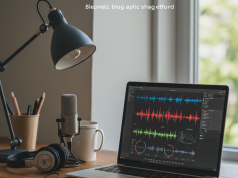The digital landscape has shifted dramatically in recent years. Video content now dominates online spaces, with the average person spending nearly 100 minutes watching videos daily.
But creating great videos is only half the battle.
Without proper SEO, even your most impressive videos might remain hidden from your target audience.
Start With Keyword Research
Just like traditional SEO, video optimization begins with understanding what your audience is searching for.
Tools like TubeBuddy and vidIQ can help identify trending topics and keywords specific to video platforms.
Don’t just target high-volume keywords. Look for long-tail phrases with clear intent that match your content.
Remember that video search queries often differ from text-based ones. People searching on YouTube tend to use more conversational phrases.
Craft Compelling Titles That Work Double-Duty
Your video title serves two critical masters: the algorithm and your human viewers.
Keep titles under 60 characters to ensure they display fully in search results.
Front-load your primary keyword, but make sure the title remains natural and engaging for human readers.
According to Backlinko’s YouTube ranking factors study, videos with exact keyword matches in their titles rank significantly better.
Description: Your SEO Powerhouse
Many creators underestimate the importance of video descriptions. This space is prime real estate for SEO.
Use the first 1-2 sentences to clearly explain what the video covers, incorporating your main keyword naturally.
Add timestamps for longer videos to improve user experience and increase watch time.
Include relevant links to related content, including one to your own website for cross-promotion.
Tags and Categories: The Classification System
Tags help platforms understand your content’s context. Choose 5-7 highly relevant tags rather than stuffing dozens of loosely related ones.
Start with your primary keyword, then add variations and related terms.
Select the most appropriate category for your video. This might seem minor, but proper categorization helps platforms recommend your content to the right audience.
Thumbnail Psychology: The Click Factor
Thumbnails don’t directly impact SEO algorithms, but they dramatically influence click-through rates – which do affect rankings.
Create custom thumbnails with consistent branding that stands out in search results.
Use contrasting colors, clear facial expressions (if applicable), and minimal, large text.
A/B test different thumbnail styles to see what resonates best with your specific audience.
Transcripts and Closed Captions: Text Matters
Search engines can’t “watch” your videos, but they can read text associated with them.
Adding accurate transcripts and closed captions makes your content accessible while providing search engines with indexable content.
This practice improves your ranking potential and makes your videos accessible to hearing-impaired viewers and those watching without sound.
According to Wistia’s research on video accessibility, videos with transcripts generate 16% more revenue than those without.
Engagement Signals: The Ranking Multiplier
Modern video SEO relies heavily on engagement metrics: watch time, likes, comments, and shares.
Encourage engagement explicitly by asking viewers questions and prompting specific actions.
Respond to comments consistently to build community and increase the comment count.
Create content that naturally encourages viewers to watch until the end, as completion rate is a powerful ranking signal.
Platform-Specific Optimization
Each video platform has unique ranking factors and best practices.
YouTube prioritizes watch time and session duration above all else.
TikTok rewards completion rate and rapid engagement in the first few hours.
Instagram favors content that keeps users on the platform.
Visit our comprehensive platform comparison guide to learn the nuances of each major video platform.
Mobile Optimization Is Non-Negotiable
Over 70% of YouTube watch time comes from mobile devices.
Ensure your videos look good on smaller screens with clear visuals and readable text.
Test your thumbnails at multiple sizes to ensure they remain effective when viewed on mobile.
Consider the mobile viewing experience when designing your intro sequences and calls-to-action.
Metadata Refresh: Keeping Content Current
Video SEO isn’t a “set it and forget it” process.
Periodically update titles, descriptions, and tags on older videos to reflect current search trends.
This practice can breathe new life into your existing content without creating anything new.
Monitor performance metrics regularly to identify opportunities for metadata optimization.
Measuring Video SEO Success
Track more than just view counts to understand your video SEO effectiveness.
Watch time, audience retention, and traffic sources provide deeper insights into performance.
Set up UTM parameters for any links in your video descriptions to track traffic to your website.
Compare performance across platforms to refine your distribution strategy.
Your Next Steps to Video SEO Success
Start by auditing your existing video content for optimization opportunities.
Develop a consistent naming and tagging convention for all future videos.
Create templates for descriptions that incorporate your most important keywords and links.
Remember that video SEO is both technical and creative – the best results come from balancing both aspects.
With these strategies in place, your videos won’t just look good – they’ll actually get found.




